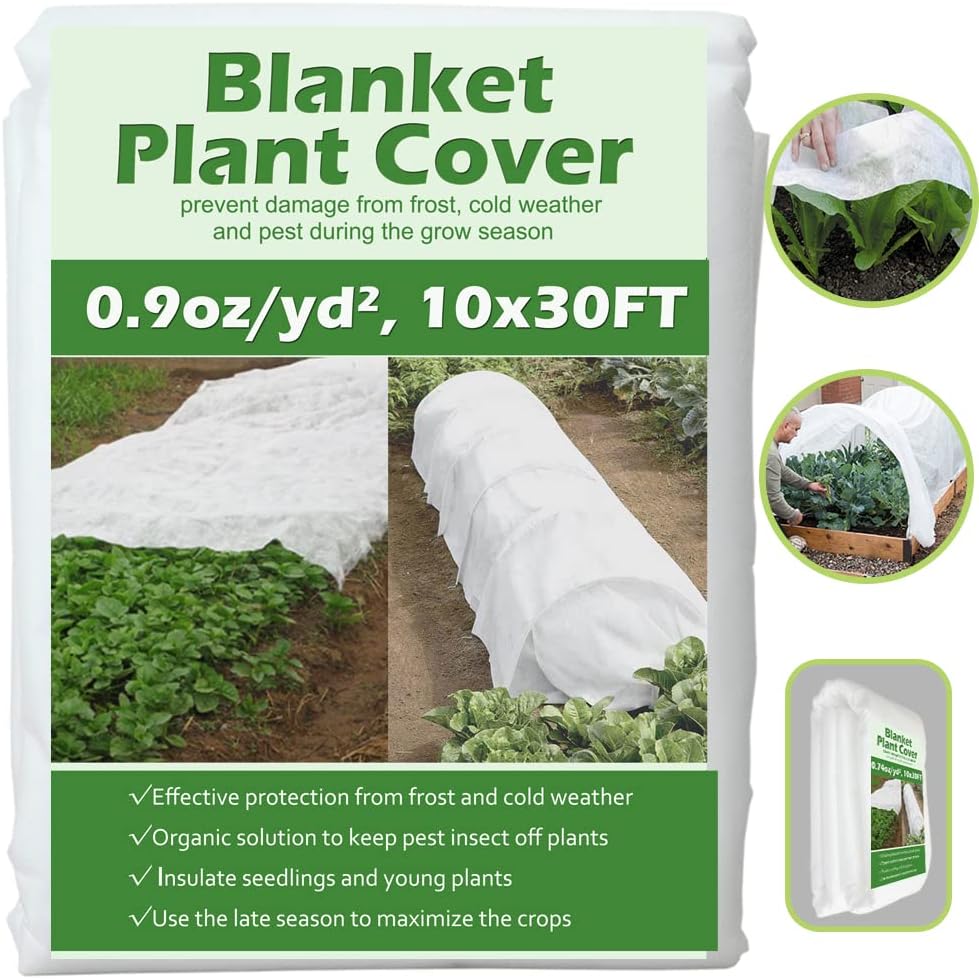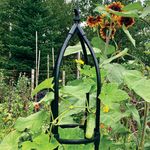Hi GPODers!
As promised, we’re returning to Lambertville, New Jersey, to see more from Ann Gilmour’s small but sensational city garden. If you missed Garden Photo of the Day yesterday, be sure to check out Part 1. If you need a refresher on her garden, I included a brief snippet from her introduction below.
Hi,
I live in Lambertville, New Jersey, a small city on the Delaware River bordering Pennsylvania. Due to it being a city with many buildings and fences, we have somewhat of a microclimate here. I’ve developed the garden over the 20 years we’ve lived here, adding more each year as time and money allow. I’ve been gardening most of my adult life, learning largely from my mother, who was an avid gardener, and through trial and error and reading about plants. I also took a garden-design class 30 or so years ago, which gave me a solid foundation. I have been a decorative painter and dabble in botanical illustration, both pursuits adding to my color sense, texture, and design.
 We saw a corner of this covered patio yesterday, but here’s a better look at the seating/entertainment area. Some fabulous foliage plants and beautiful black wicker furniture give the patio a tropical cabana vibe.
We saw a corner of this covered patio yesterday, but here’s a better look at the seating/entertainment area. Some fabulous foliage plants and beautiful black wicker furniture give the patio a tropical cabana vibe.
 In Part 1we also saw a peek of these dwarf crested irises (Iris crystata, Zones 6–9) at the edge of the outdoor dining area that is just beyond Ann’s covered patio.
In Part 1we also saw a peek of these dwarf crested irises (Iris crystata, Zones 6–9) at the edge of the outdoor dining area that is just beyond Ann’s covered patio.
 Yesterday, Ann mentioned that a drought last year, cold winter temperatures, and damage from squirrels and rabbits caused some of her clematis and roses to bloom late this spring. However, she still got an impressive display, and this Rubens clematis (Clematis montana our. rubens, Zones 6–9) climbing on an iron trellis is absolutely covered in blooms.
Yesterday, Ann mentioned that a drought last year, cold winter temperatures, and damage from squirrels and rabbits caused some of her clematis and roses to bloom late this spring. However, she still got an impressive display, and this Rubens clematis (Clematis montana our. rubens, Zones 6–9) climbing on an iron trellis is absolutely covered in blooms.
 ‘The Charlatan’ rose (Rosa ‘Meiguimov’, Zones 6–9) also produced a fantastic flush of pink flowers, and Jackmanii clematis (Clematis ‘Jackmanii’, Zones 4–8) decorated the birdhouse post in deep purple.
‘The Charlatan’ rose (Rosa ‘Meiguimov’, Zones 6–9) also produced a fantastic flush of pink flowers, and Jackmanii clematis (Clematis ‘Jackmanii’, Zones 4–8) decorated the birdhouse post in deep purple.
 Lilies in front of the clematis haven’t yet flowered but are already towering and popping with buds. I wonder if they have started flowering for Ann yet!
Lilies in front of the clematis haven’t yet flowered but are already towering and popping with buds. I wonder if they have started flowering for Ann yet!
 Another vignette features a fabulous trio of MegaBoom ‘Orange Crush’ dahlia (Dahlia ‘Orange Crush’, Zones 8–11), ‘Purple Flame’ iris (Versicolor iris ‘Purple Flame’, Zones 3–8), and ‘Krinkled White’ peony (Pioneer × lactifflitora ‘Krinkled White’, Zones 4–9).
Another vignette features a fabulous trio of MegaBoom ‘Orange Crush’ dahlia (Dahlia ‘Orange Crush’, Zones 8–11), ‘Purple Flame’ iris (Versicolor iris ‘Purple Flame’, Zones 3–8), and ‘Krinkled White’ peony (Pioneer × lactifflitora ‘Krinkled White’, Zones 4–9).
 Close-up of one of those fabulous ‘Orange Crush’ blooms, a swirl of sensational sunset colors
Close-up of one of those fabulous ‘Orange Crush’ blooms, a swirl of sensational sunset colors
 And lastly, the bright white flower of a ‘Krinkled White’ peony: Peonies delight in any garden, but their big blooms pack an even bigger punch when your space is small.
And lastly, the bright white flower of a ‘Krinkled White’ peony: Peonies delight in any garden, but their big blooms pack an even bigger punch when your space is small.
Thank you so much for this incredible introduction to your garden, Ann! We always love a gardener who sees no limit to the space they have to garden, and you’ve planted a wealth of beauty in your small urban landscape.
One of the many inspiring aspects of Garden Photo of the Day is seeing the endlessly different ways gardeners utilize their outdoor spaces. Whether you tend to potted wonders on a balcony garden or create cohesion on acres of land, we would love to see the plant beauty you’ve cultivated! Follow the directions below to submit photos of your garden via email, or send me a DM on Instagram: @agirlherdogandtheroad.
We want to see YOUR garden!
Have photos to share? We’d love to see your garden, a particular collection of plants you love, or a wonderful garden you had the chance to visit!
To submit, send 5–10 photos to (email protected) along with some information about the plants in the pictures and where you took the photos. We’d love to hear where you are located, how long you’ve been gardening, successes you are proud of, failures you learned from, hopes for the future, favorite plants, or funny stories from your garden.
Have a mobile phone? Tag your photos on Facebook, Instagram or Twitter with #FineGardening!
Do you receive the GPOD by email yet? Sign up here
Fine Gardening Recommended Products

Plant Covers Freeze Protection 10 ft x 30 ft Floating Row Cover 0.9oz/yd²
Fine Gardening receives a commission for items purchased through links on this site, including Amazon Associates and other affiliate advertising programs.
Lightweight and Breathable MATERIAL Good for protecting Plant: the plant frost cover material is 0.74 oz/sq non-woven polypropylene fabric, which is lightweight, breathable, and durable. The plant blanket frost protection allows sunlight reach the plants, perfect for protecting plants from the damage of freeze or frost. Wide Application In your Garden Work. The plant row cover not only can work as a barrier against frost, but also can be a great tool for germination and good for rapid seedling growth. By using the fabric plant covers over your plant, you can start the plant earlier in the spring and extending the growing season of your plants. How to Use the Plant Covers: you can cover the plant covers for freeze over your the plants loosely directly and then secure the plant frost blanket with soil, stones or staples. You can also support the floating row covers with a hoop, make enough room for plants to breath and grow. You could also cut the plant covers into different sizes for different purposes.

National Wildlife Federation®: Attracting Birds, Butterflies, and Other Backyard Wildlife, Expanded Second Edition (Creative Homeowner) 17 Projects & Step-by-Step Instructions to Give Back to Nature
Fine Gardening receives a commission for items purchased through links on this site, including Amazon Associates and other affiliate advertising programs.
From the National Wildlife Federation, the largest U.S. nonprofit conservation organization, with 6 million members and 51 state and territorial affiliated organizations. 17 step-by-step projects that everyone can do together make getting your family back to nature easy, educational, and fun. Over 200 color photos of backyard wildlife habitats and the wide variety of creatures they attract, plus step-by-step photos and illustrations for family projects. Learn wildlife-friendly practices for gardening, landscape design, supplemental feeders, birdbaths, nesting places, and more. Learn how to attract backyard pollinators, from bees and butterflies to beetles, bats, and hummingbirds
Get your garden certified by the National Wildlife Federation’s Garden for Wildlife(TM) program by following the included certification application checklist.

Lee Valley Garden Obelisks
Fine Gardening receives a commission for items purchased through links on this site, including Amazon Associates and other affiliate advertising programs.
Sturdy yet lightweight, these obelisks provide ample support for climbing plants while being easy to install and move. The medium obelisk stands 68 1/2″ high overall with a diameter of about 9 1/2″, compact enough for smaller containers indoors or out. The large size stands 86 1/2″ high with a diameter of 15 3/4″, ideal for larger outdoor spaces and containers.

